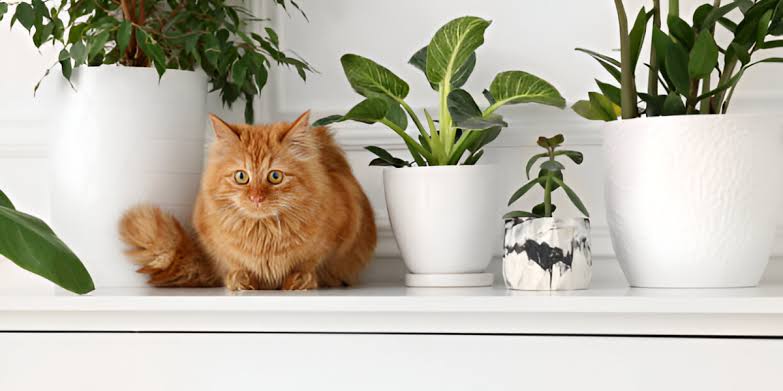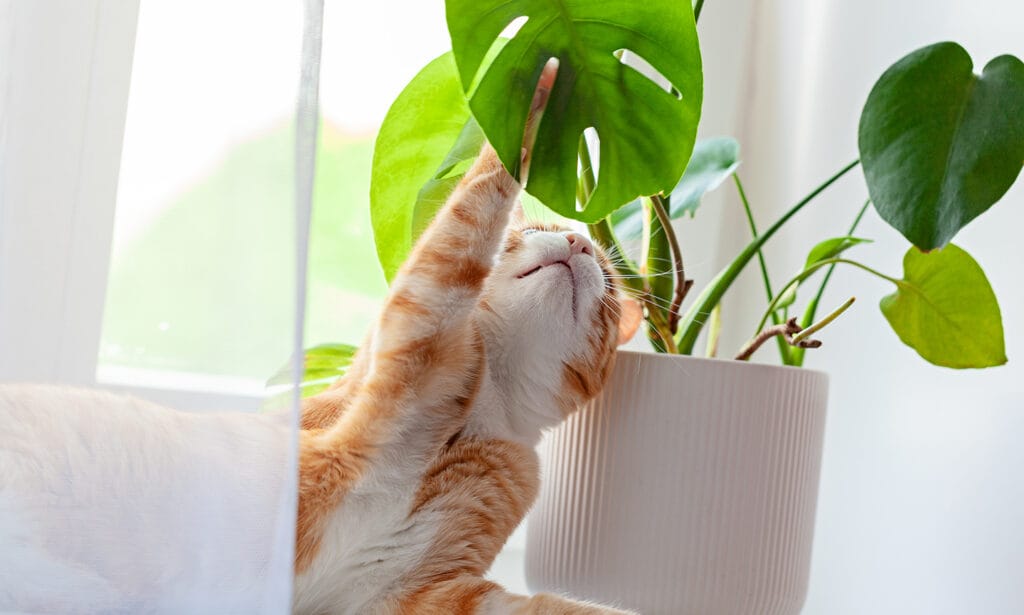Cat Friendly Low Light Plants: Safe & Easy Greenery for Your Home
Introduction
The good news is there are plenty of cat friendly houseplants out there if you are a cat owner like myself who enjoy the idea of having some greens a part of your home interior yet you are concerned about your overly curious cat eating poisonous plants. Most cat owners are looking for plants for cats which are easy to grow and can grow in locations with low light conditions. Fortunately, there is a list of plants that can fulfill both of these requirements.
Later in this article, you will be able to learn which plants are safe for cats and can be effectively used in low light areas. If you are in a low-light environment or simply prefer low maintenance plants, we will be of great service to you.
Understanding the Cat friendly low light plants
Felines like to sniff, and since touching comes secondary, they tend to investigate each new area, and what better way to do it than eating the plants. Although some plants are innocuous and secure, others are poisonous and dangerous to people’s health; they may cause anything from stomach upsets to severe poisoning. What plants to choose when some of them will be placed in the house with cats? To avoid any troubles, only choose safe plants for your interior.

Besides, not all plants have a high density of light requirements. Most of the indoor plants can be grown under low light hence making them ideal to be placed in places such as apartments, offices or rooms that have few windows. In the following article, we will pay special attention to cat safe indoor plants that don’t require frequent watering due to low light.
Why Low Light Plants?
People can rarely get the perfect lighting conditions in every house they live hence not every plant requires a bright lit environment. Due to this, it is common to find people who work in rooms with little light feel that it is impossible to grow plants in such places. However, there are very many plants that grow in low light and yet they appear very healthy and well oxygenated all the times. Low light plants are generally suited for growing in conditions where they have only filtered or indirect light and thus prefers to grow in corners, bathrooms or any region with north facing window.
Some benefits of low light plants include:
- Less Maintenance: These plants still do not need to be watered frequently and do not need much attention.
- Adaptability: They can actually do well in areas that not so favorable for sunny conditions.
- Aesthetic Appeal: It brings out the element of green on the room and raised the standards of the quality of air in the room.
Cat-Friendly Low Light Plants
There must be hundreds of plants and let’s look at some of the most recommended cat-safe plants that grow well in low-lighting.
1. Spider Plant (Chlorophytum comosum)
Spider plant is one of the most sought after indoor plants by many people around the world. Cat safe plant however some cats can be attracted to chew on its upward curling fronds. Thankfully, they will not be harmed if they do.

- Light Requirements: Tolerates low to medium light
- Watering: Water after the top layer of the soil appears dry
- Why it’s cat-friendly: Safe to use around cats, low maintenance
2. Areca Palm (Dypsis lutescens)
Both the Areca palm, commonly referred to as the butterfly palm, can give your home a touch of the tropics. Not only that they can be safely fed to cats, but moreover the plants themselves germinate well in low light.
- Light Requirements: Favour indirect light but is suitable for low light conditions
- Watering: Water them frequently but allow the soil to be moist and not water lodged.
- Why it’s cat-friendly: Harmless to cats, and can be a very large statement indoor plant.
3. Bamboo Palm (Chamaedoria seifrizii)
Bamboo palms are also useful in regard to cat-friendly low light plants as well. These are popular for their air-filtering abilities, and can, therefore, be said to complement any space.

- Light Requirements: Low to moderate light
- Watering: Water the plants as soon as the surface soil feels dry- to the touch.
- Why it’s cat-friendly: Totally safe for people and also very easy to clean
4. Boston Fern (Nephrolepis exaltata)
The Boston fern is a carrera look that delicate, soft plant that is safe for cats. It adapts well to low light conditions and it fits in any home.
- Light Requirements: Low to medium rather dim intensity
- Watering: It is important to maintain slightly moist soil, at all times
- Why it’s cat-friendly: Will not harm cats when ingested or come into contact with the skin, attractive leaves.
5. Parlor Palm (Chamaedorea elegans)
The parlor palm can grow to be a bush like plant and is characterised by green leaves that are shiny. Ideal for night shooting and non-toxic to cats at all ph levels!

- Light Requirements: Low to medium indirect light
- Watering: Water when the soil feels dry
- Why it’s cat-friendly: Non-toxic to cats and prefers shady conditions.
6. Cast Iron Plant (Aspidistra elatior)
Living up to the name of the Cast Iron plant it can be considered to be almost impossible to kill and can grow in very low light. This also makes it safe for use around cats which is ideal for any home with cats or other pets.
- Light Requirements: Low light or indirect light
- Watering: Water occasionally; it is a xerophytic plant
- Why it’s cat-friendly: Non-toxic, hard to kill
7. Prayer Plant (Maranta leuconeura)
A plant of low light requirement, the prayer plant has electrifying brown and green patterns on its leaves. Friendly for cats and will make your indoor gardening look more appealing.

- Light Requirements: Scarcely tolerates indirect high-intensity light
- Watering: Water the plants and maintain the soil to be damp rather than saturated.
- Why it’s cat-friendly: Harmless to cats, fancy shaped leaves
Low Light Plants Suitable for Cats and A Comparison.
Here’s a quick comparison of some of the plants we’ve discussed:
| Plant | Light Requirements | Watering Needs | Cat-Safe | Extra Features |
|---|---|---|---|---|
| Spider Plant | Low to medium light | Water when top inch is dry | Yes | Easy to propagate, air-purifying |
| Areca Palm | Indirect to low light | Moderate moisture | Yes | Adds tropical aesthetic |
| Bamboo Palm | Low to moderate light | Water when soil feels dry | Yes | Air-purifying, easy to care for |
| Boston Fern | Low to moderate light | Keep moist | Yes | Lush, vibrant foliage |
| Parlor Palm | Low to medium light | Water when top inch is dry | Yes | Elegant appearance |
| Cast Iron Plant | Low or indirect light | Water sparingly | Yes | Extremely low maintenance |
| Prayer Plant | Low to moderate light | Keep moist, but not waterlogged | Yes | Beautiful leaf patterns |
Cat-Proofing Low Light Plants for Growth
Managing your cat friendly low light plants is not difficult. Here are some basic steps to keep your plants healthy and safe:
- Choose the Right Location: Keep your plants in indirect sun exposure. Do not expose them to direct sunlight because they may dry out or start to burn.
- Watering: One of them is over watering the plants When manning a garden or any place with plants for that matter. Water only the soil that has dried up, before you water your plants. Note the requirements for watering this plant because having wet and soggy soil can lead to root rot.
- Regular Maintenance: Prune off any wilting or faded flower, leaves and clean the leaves with a damp cloth for better photosynthesis.
- Monitor Your Cat’s Behavior: However, these plants are non-toxic, some cats being naturally inquisitive may still chew them. If this happens then it is advisable to take the plants away from their reach, or place sprays or scents of oranges around them.
- Fertilizing: The best fertilization is to use a agricultural.With a delicate, organically maintainedsthrough out the growing period of the year which comprise of spring and summer. Do not use superphosphate or other fertilizer types too close to the plant as it will damage it.

(FAQs)
1. Are all the plants that can be kept indoors safe for cats?
Indoor plants are not all pet-friendly; more specifically not all of them are safe for cats. Lilies, poinsettias and pothos, which are some of the common house plants , can be fatal to cats. It is recommended to look up whether a specific plant is cat-safe when you are going to buy one for your house.
2. Are cats capable of developing allergies from plants?
Yes, there are actually some plants that cats can be some how allergic to even though they are not poisonous plants. In case of any reactions like itching, swelling or vomiting contact the veterinarian that attends to your pet.
3. What measures can I take that will stop my cat eating on plants?
This is a sure way of making the cat to stop chewing on the plants by placing them at areas little hard for the cat to reach for. You can also use items that are safe for pets such as the use of citrus sprays or objectionable-tasting sprays on the leave.
4. Which plants are lethal to cats?
Known toxic plants for cats are lilies, ivy, dieffenbachia, and azalea plants. Cats should always be kept safe from any plants that you introduce at the compound.
Conclusion
Decorating your house with some low light, cat-friendly plants is a good way to improve your interior design having some parts of nature inside your house without posing a thread to your cats. Low maintenance? Check out the spider plant or the easy to care bamboo palm; some plants give the tropical elegance to your house.
You don’t need to be an expert in gardening to achieve a lush green indoor garden that you and your cat can enjoy You just need to learn what type of plants are safe around cats and what general rules of caring for them are. Happy planting!

